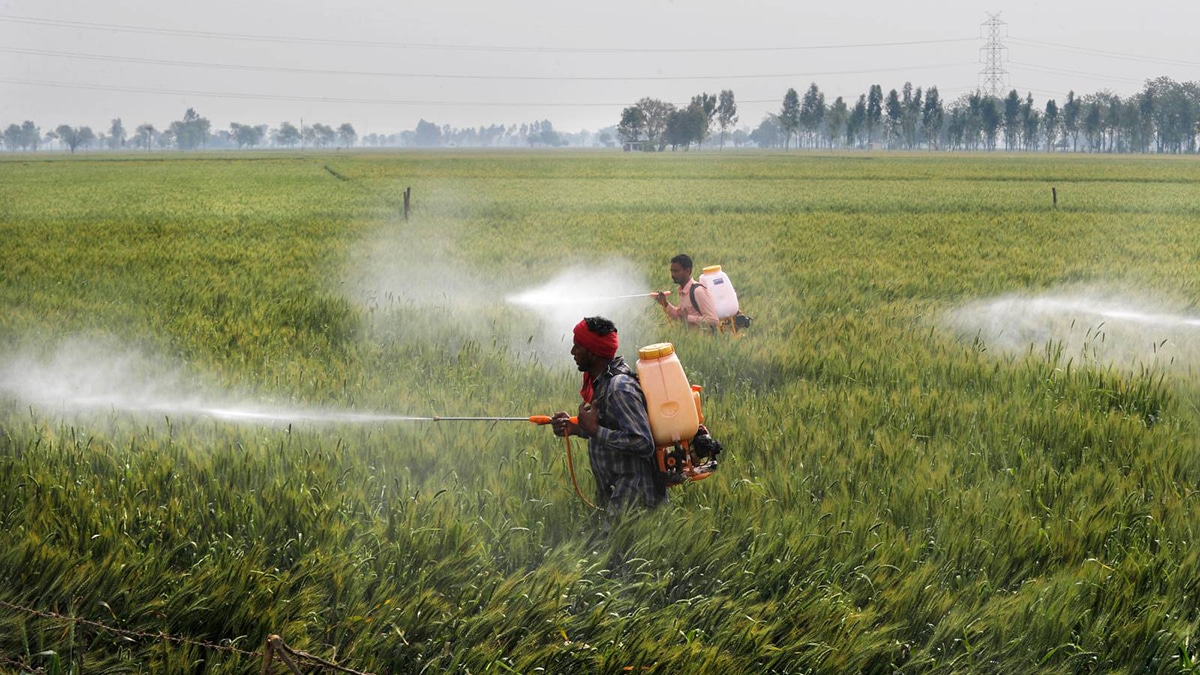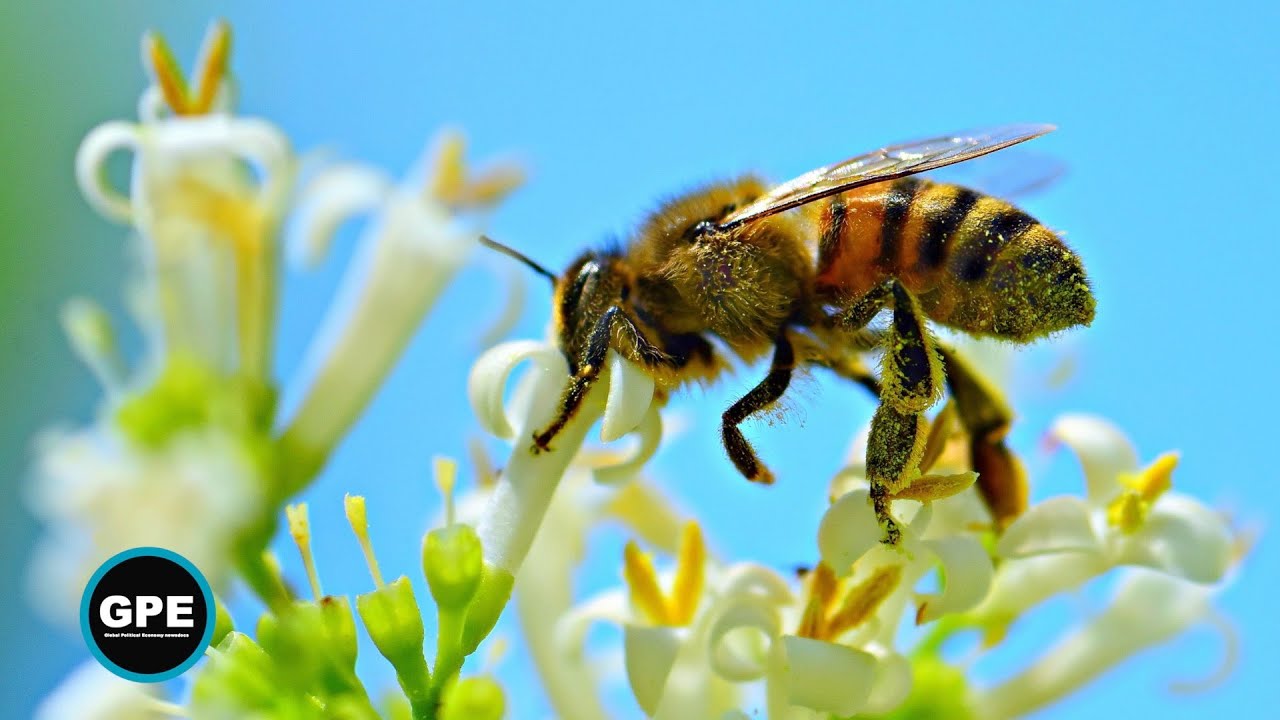
‘Forever Chemicals’ in Pesticides Raise Red Flags About Origins, Impact
by
Forever chemicals, already a hazardous presence in our kitchens, floor coverings and makeup tables, are now also turning up in some pesticides sprayed on our crops and into the air. Action Alert!
Per- and polyfluoroalkyl substances, lab-made chemicals known collectively as PFAS, have been used in some varieties of nonstick pans, plastic packaging, cosmetics, stain-resistant carpeting, firefighting foam, and were recently found in some dental flosses and tampons. Now these chemicals have been found in pesticides, representing yet another route of exposure. But instead of protecting the public, the EPA seems to remain intent on protecting the chemical industry.
Every year, an estimated one billion pounds of pesticides are introduced into the environment. They become part of the air we breathe and settle into the soil and water that grow our food. Pesticides, already suspected of altering the gut microbiome, touch us in ways that other PFAS-tainted products can’t. The average person may never encounter firefighting foam, but we all eat, drink, and breathe.
When researchers in Maryland and Massachusetts found multiple PFAS in public mosquito-control sprays, the EPA speculated that these chemicals may come from the containers used to store the pesticides. Investigators zeroed in on the theory that a process called fluorination, used in up to 30 percent of containers made for pesticide storage, also made those containers prone to leaching.
The EPA released a report in early September that confirmed those suspicions. After tests on three brands of fluorinated containers, the EPA found clear indications that PFAS do leach into the pesticides from the container walls, especially the longer they stay in them. The EPA wants further studies, but it did warn companies that make those containers.
There are two other potential ways to explain how PFAS wound up in pesticides, sources that could make container-leaching problems just the tip of the iceberg.
Environmental toxicologist Steve Lasee and a team at Texas Tech University published a separate report on PFAS in pesticides in late summer and, while praising the EPA study and its findings, determined that leaching alone could not account for the PFAS discovered in seven of the 10 common pesticides they examined.
Lasee’s team found the types of PFAS typically used to help keep liquids from clogging in valves, raising suspicions that manufacturers may add these chemicals as inert ingredients to make their pesticides easier to spray. The public may never know whether that’s happening because inert ingredients in a pesticide are considered trade secrets that manufacturers don’t need to disclose.
The EPA maintains a list of allowable inert pesticide ingredients and removed 12 PFAS from that list in September. Pesticide toxicologist Pamela Bryer of the Maine Board of Pesticides Control believes regulators can go further, saying as many as seven other types of PFAS may still be permitted for use. The EPA only says that it continues to evaluate the issue.
Dozens of pesticide ingredients, like those containers, also go through fluorination during manufacturing. That process may qualify those ingredients – and by extension, the pesticides they’re in – to be considered PFAS themselves. Keeping those products out of the air and water is difficult because no current regulations ban pesticides with fluorinated ingredients.
The reason PFAS are used so widely is also why they’re problematic: PFAS repel grease, make materials stronger and are slow to degrade. They won’t break down easily in products, but also don’t break down in soil, water, air – or our bodies. Tests suggest most of us have PFAS in our blood.
Medical studies link PFAS to an array of health problems, including reduced immune response, liver damage and endocrine disruption. Perfluorooctanoic acid, the most well-studied member of the PFAS family, is classified as a possible human carcinogen. Another variety, perfluorinate, appears to worsen cases of COVID-19 pneumonia. Two common PFAS varieties are no longer made in the United States, but many others remain.
States Take Legal, Regulatory Action
Many states aren’t waiting for the federal government to take dramatic action. The Pew Charitable Trusts’ Stateline report indicates 24 states have already launched lawsuits, regulations and plans to phase out PFAS, with the topic expected to be a big issue in many state legislatures next year.
Maine set the trend in 2021, banning PFAS in all new products beginning in 2030, with limited exceptions for essential products lacking viable alternatives. The state of Washington has gone more aggressive, giving regulators authority to start a PFAS phase-out as early as 2025.
Other states favor more targeted approaches. Michigan’s work has focused on keeping PFAS out of water. Hawaii law only bans PFAS in food packaging and firefighting foam. Colorado limited their use in a large group of consumer products and in oil and gas production. California also passed limits on PFAS in cosmetics and textiles, but the governor vetoed an additional requirement that would have forced manufacturers to report more data about their products.
Unfortunately, these state actions are necessary due to the EPA’s inaction—or rather, the agency’s actions to protect industry profits. The agency has developed a “working definition” of PFAS chemicals that excludes thousands of PFAS chemicals that are captured by the definitions used by other scientific bodies. This means more exposure to dangerous chemicals for us, and more profits for chemical and drug manufacturers.
Action Alert! Write to Congress and the EPA, telling them to ban PFAS chemicals. Please send your message immediately.





